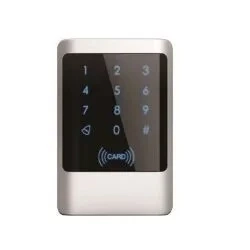Standalone access control systems help secure doors and entry points without a central management system or network. They work independently, making them a good option for homes, offices, warehouses, and other places where only a few access points need protection.
These systems use different technologies, like keypads, card readers, and fingerprint scanners, to let in only authorized people. They are easy to install, reliable, and useful for controlling access without extra software or IT support. This article explains how these systems work, their features, and where they are commonly used.
How They Work
Standalone access control systems store user credentials directly on the device. When someone tries to enter, they must enter a password, scan a card, or use a fingerprint. The system checks the information, and if it matches, the door unlocks.
Unlike networked systems, standalone devices don’t need to connect to a server. Everything runs on the unit itself, making setup easier and reducing costs.
Main Parts of a Standalone System
- Authentication Interface: A keypad, card reader, or fingerprint scanner where users enter their information.
- Controller Unit: The built-in processor that checks credentials and grants or denies access.
- Electric Lock: The lock that opens when access is approved.
- Power Supply: Most systems run on 12V DC power, so they work even in places without stable electricity.
- Indicators: LED lights and buzzers provide feedback when granted or denied access.
Features of Standalone Access Control Systems
1. Different Ways to Access
Users can enter through various methods, such as:
- PIN codes
- RFID cards
- Fingerprint scanning
- A mix of card and PIN for added security
2. Works Without a Network
Everything is stored inside the device, so no external connection is needed.
3. Weather-Resistant Models
Some models are designed for outdoor use and can handle rain, dust, and extreme temperatures. These are great for gates, garages, and outdoor storage areas.
4. Prevents Card Cloning
Many standalone systems have a feature that prevents multiple cards from being read at the same time. This helps stop unauthorized duplication.
5. LED and Sound Alerts
Lights and sounds confirm if access is allowed or denied.
6. Exit Buttons and Alarms
Some systems can connect to exit buttons and alarms for extra security against unauthorized entry.
Types of Standalone Access Control Systems
1. Keypad-Based Systems
Users enter a numeric code to unlock the door. These are affordable and work well for small offices, homes, and storage rooms.
2. Card-Based Systems
Users scan an RFID or EM card to enter. These are common in offices, warehouses, and hotels where multiple users need access.
3. Biometric-Based Systems
Fingerprint scanners add extra security by making sure only the right people can enter. These are useful in high-security areas.
Power Supply and Installation
Most standalone systems run on 12V DC power, though some work with 9V–24V inputs. A stable power source is important to keep them working properly.
During installation, consider:
- Mounting the device securely to prevent tampering
- Proper wiring between the system, power supply, and lock
- Placing the device where it’s easy to access but protected from damage
Managing Users and Security
1. User Capacity
Basic models store a few hundred users, while advanced ones can store thousands.
2. Time-Based Access
Some systems allow access only during set hours, making them useful for workplaces and restricted zones.
3. Tamper Alerts
Many systems have alarms that trigger if someone tries to break in or modify the device.
Common Uses
1. Offices
Controls entry to main doors, server rooms, and restricted areas.
2. Homes and Apartments
Protects entrances to private homes and gated communities.
3. Warehouses
Prevents unauthorized access to storage areas and inventory.
4. Schools and Universities
Secures classrooms, offices, and research labs.
5. Hospitals and Clinics
Controls access to patient records, medicine storage, and labs.
Why Choose a Standalone Access Control System?
- Simple to Install: No complex setup or extra software needed.
- Low Maintenance: Works on its own without IT support.
- Flexible: Can be used in different locations without extra connections.
- More Secure Than Keys: No risk of lost or copied keys.
- Affordable: Costs less than networked systems.
Final Thoughts
Standalone access control systems are a simple and effective way to manage entry points. They come in different types, from keypads to biometric scanners, making them useful for homes, offices, warehouses, and high-security areas. Whether you need a basic system for a small office or a fingerprint scanner for a sensitive area, these devices offer a reliable way to control access. Understanding their features and installation needs will help you choose the right system for your security needs.


